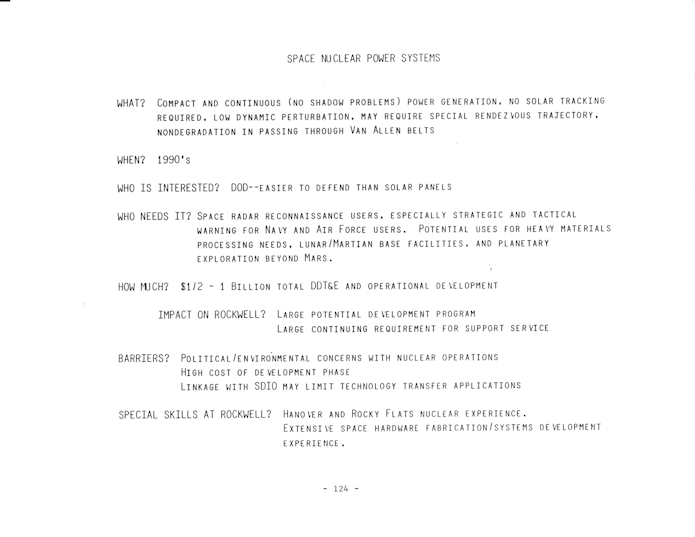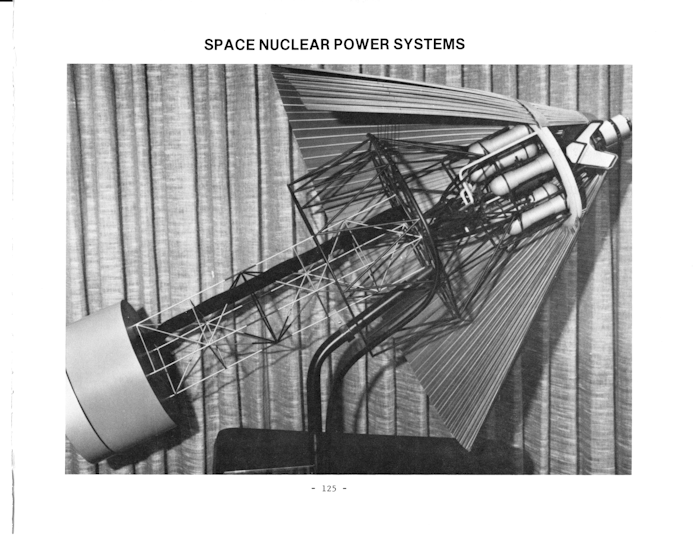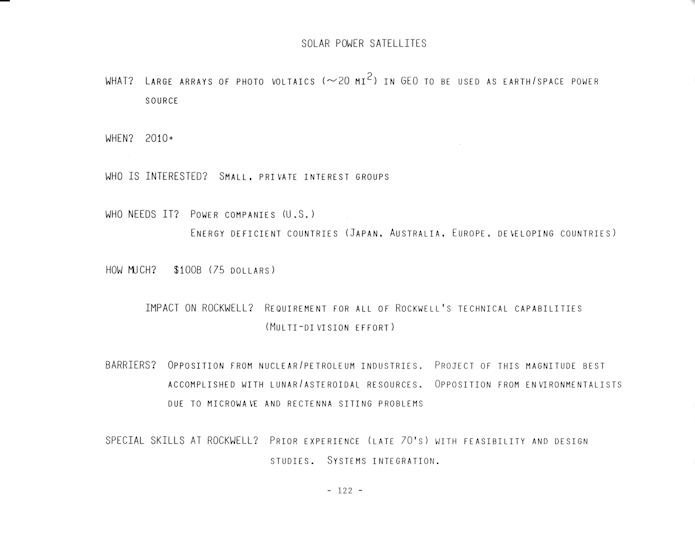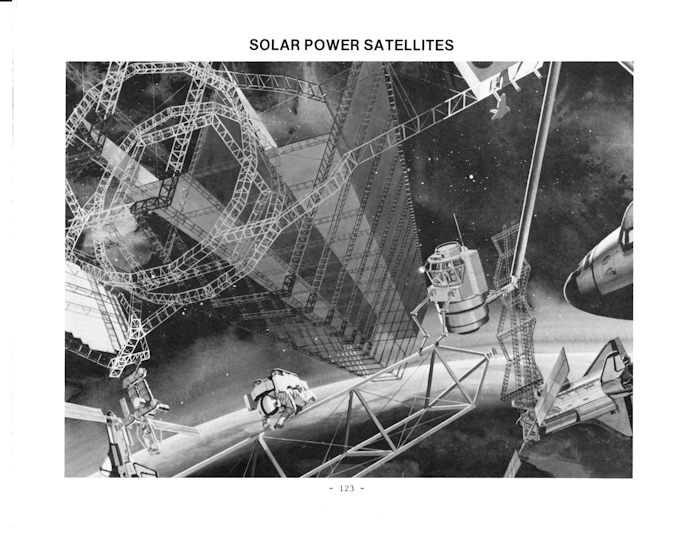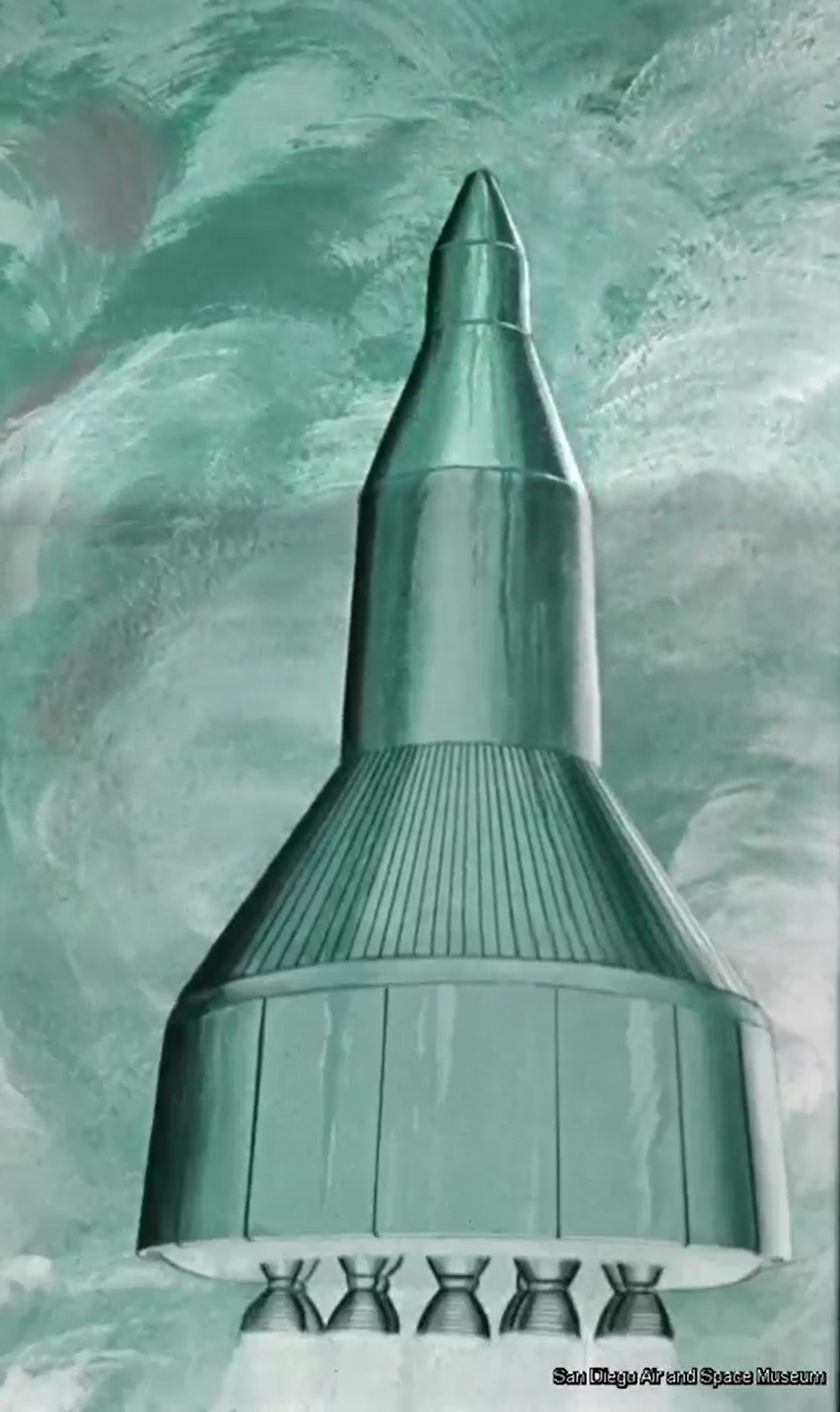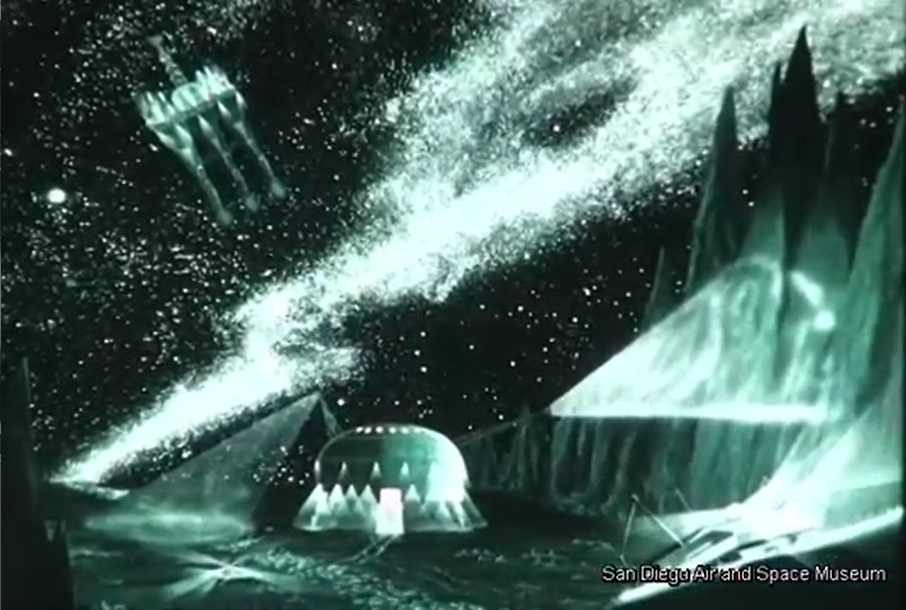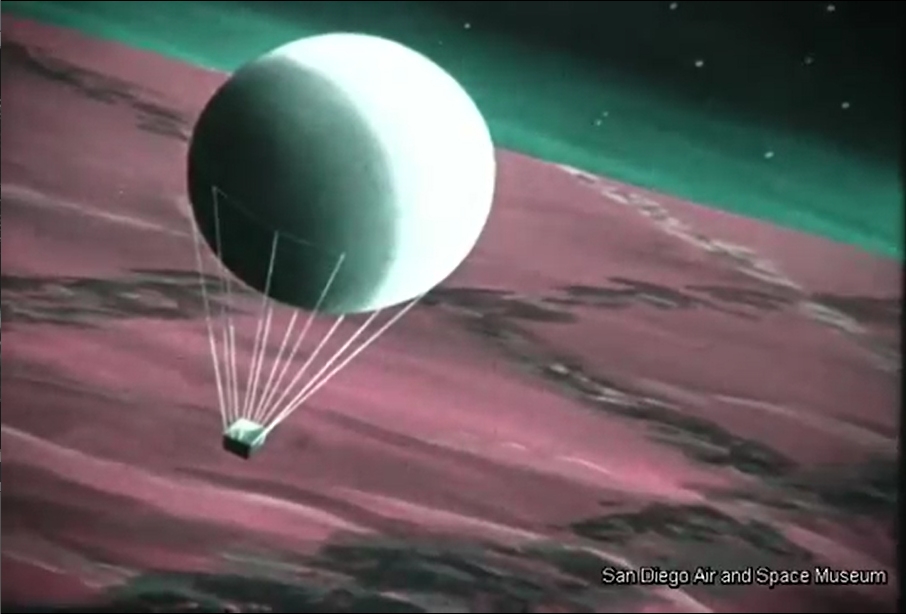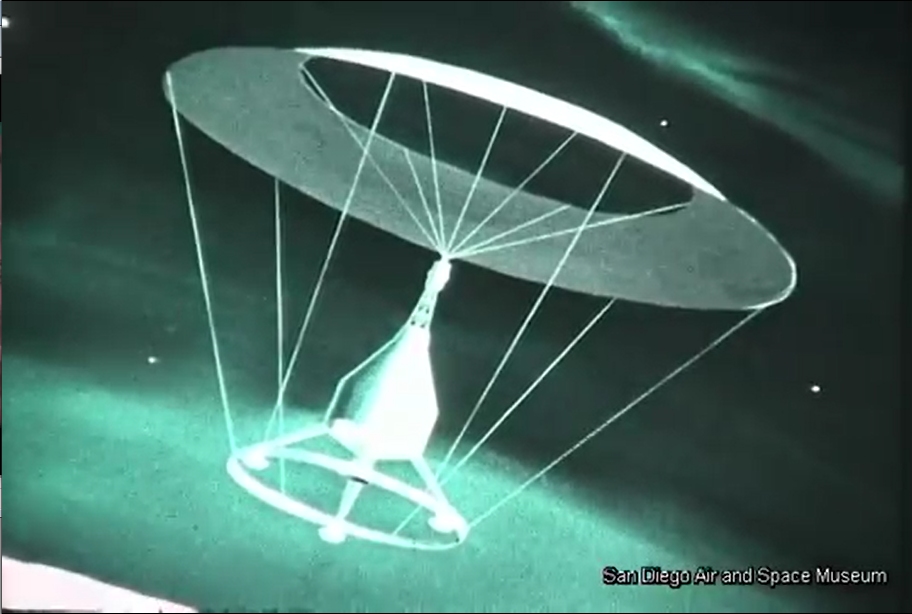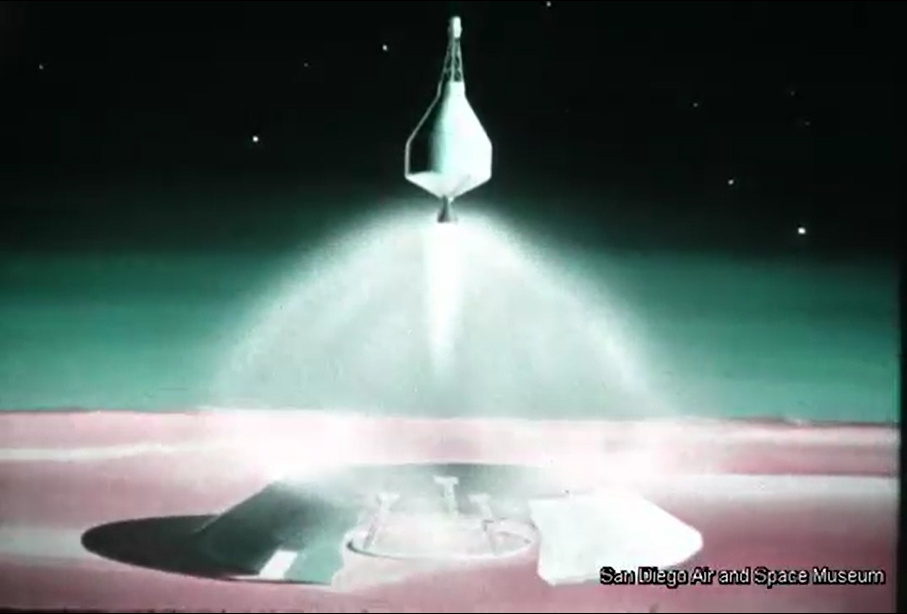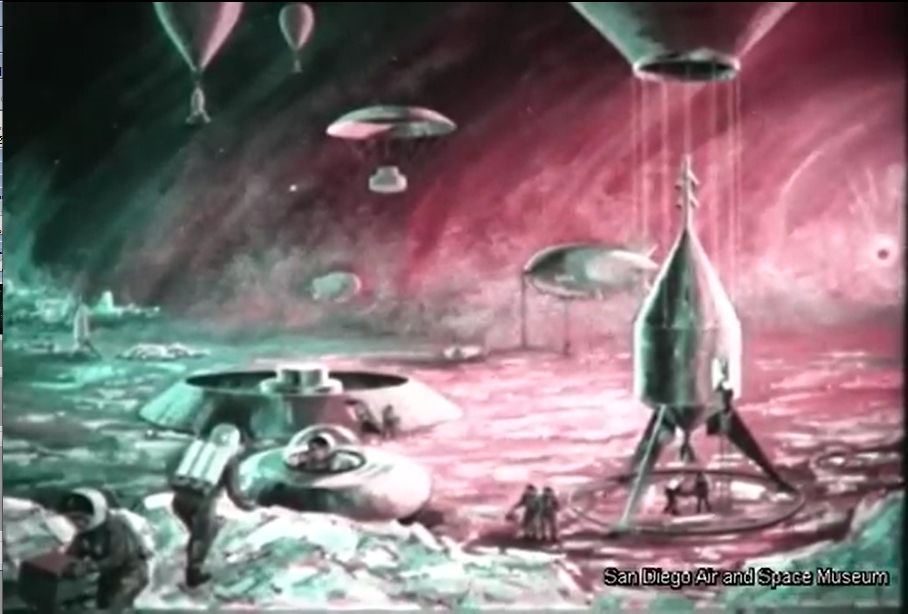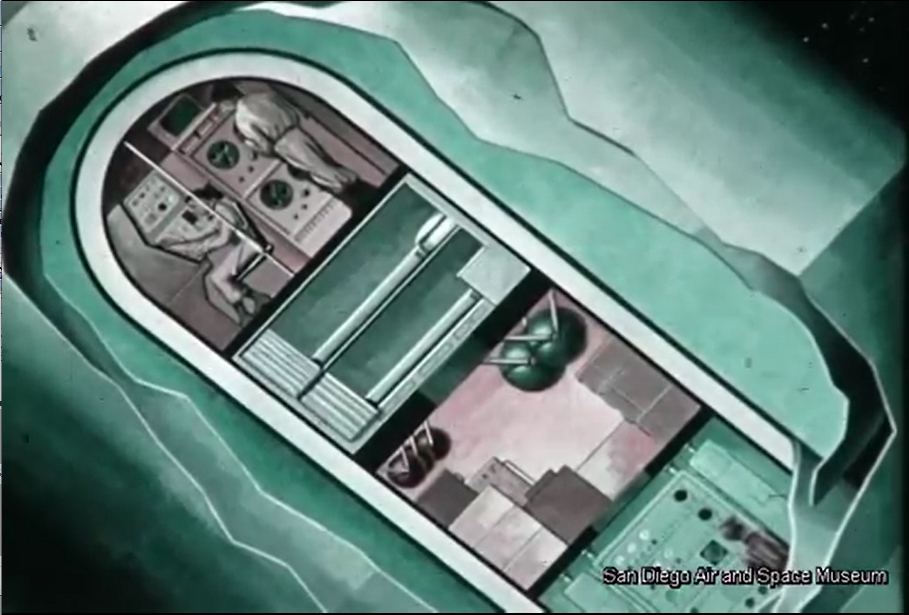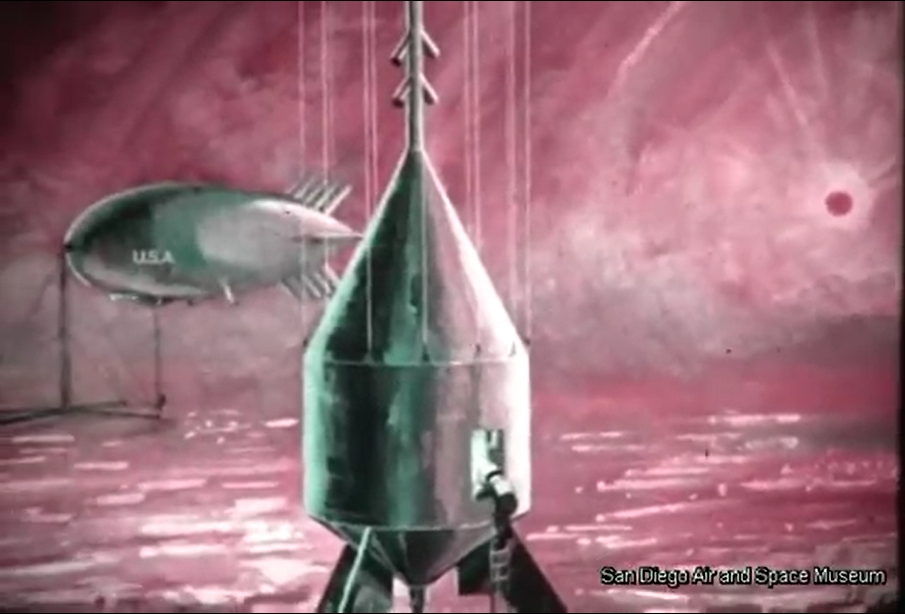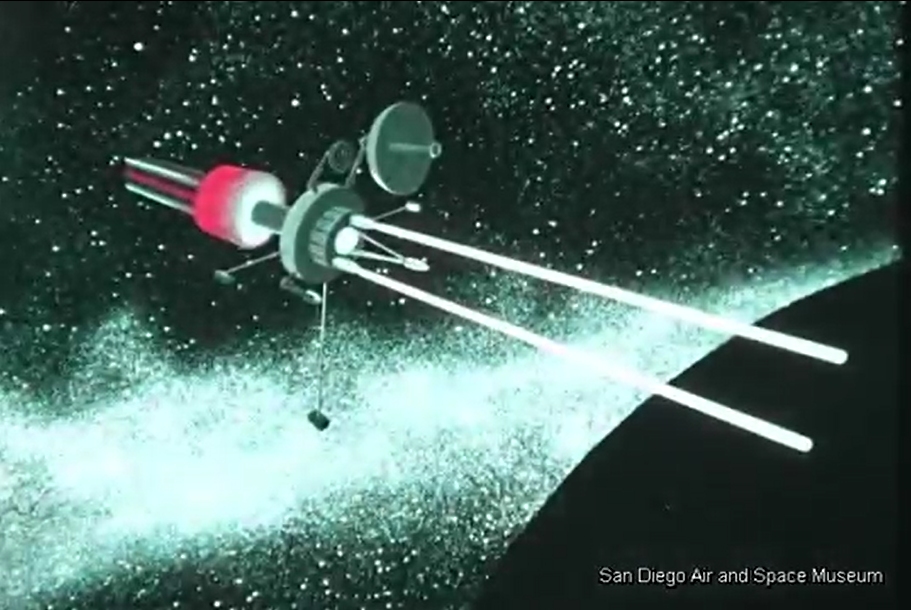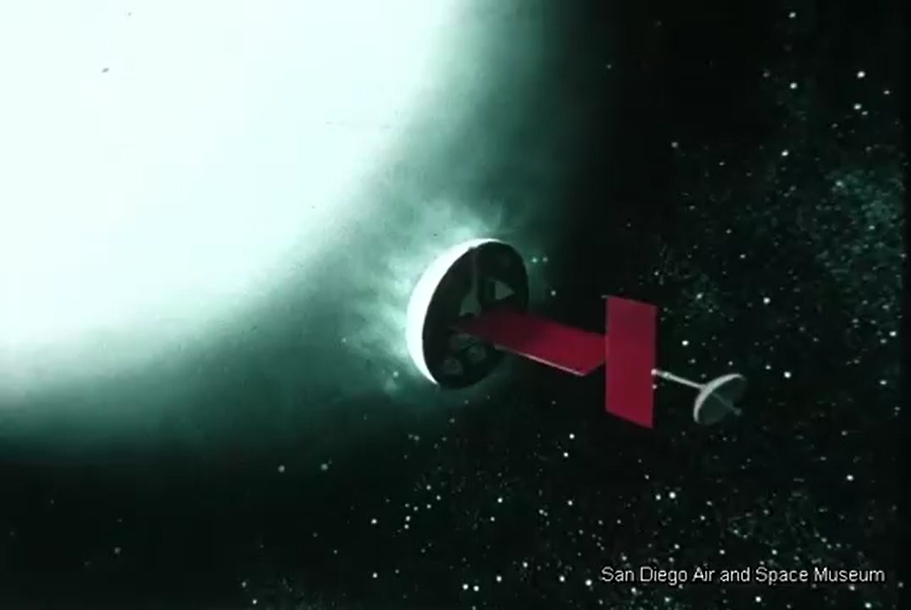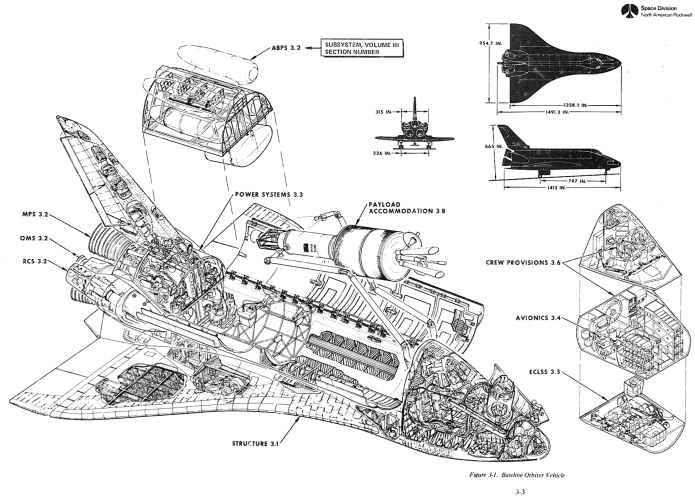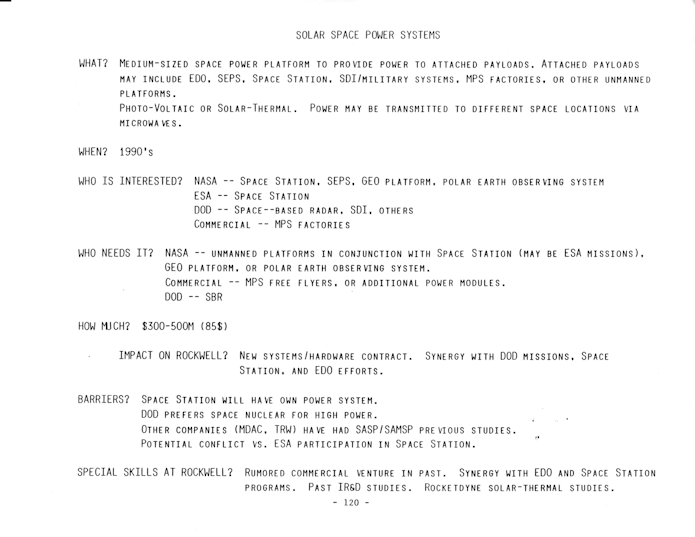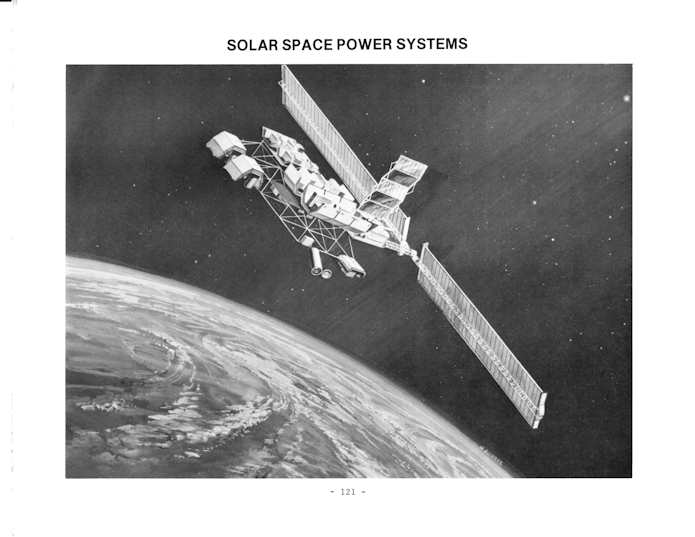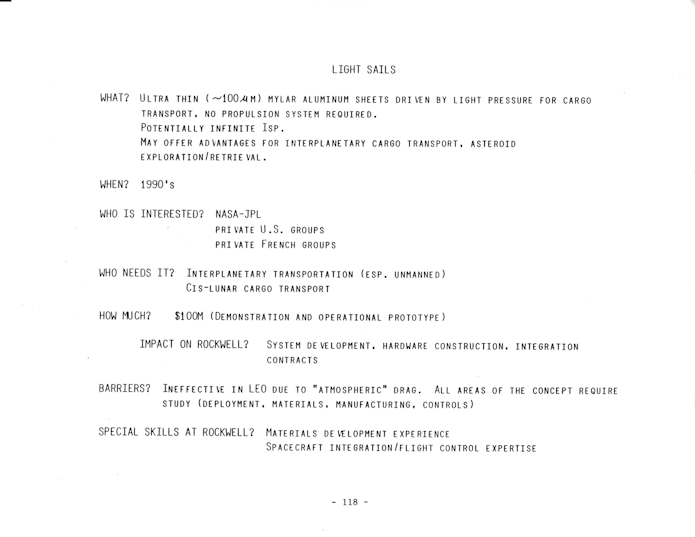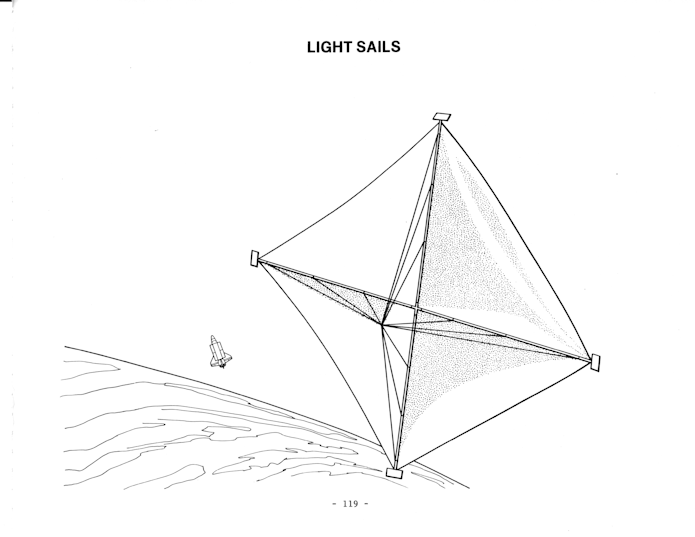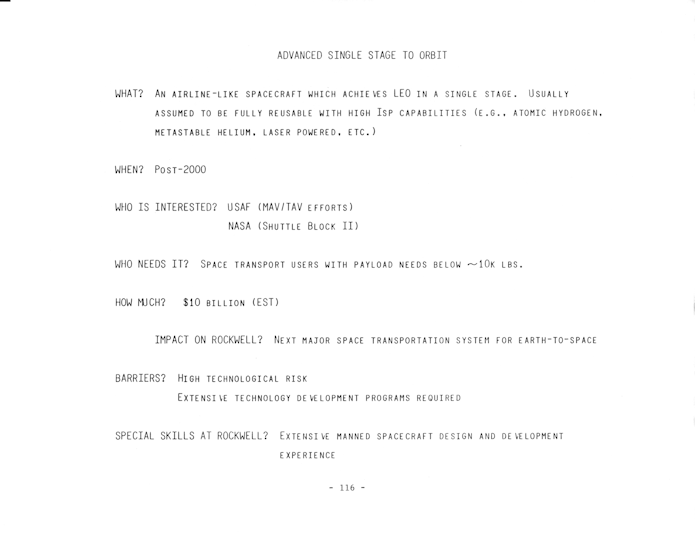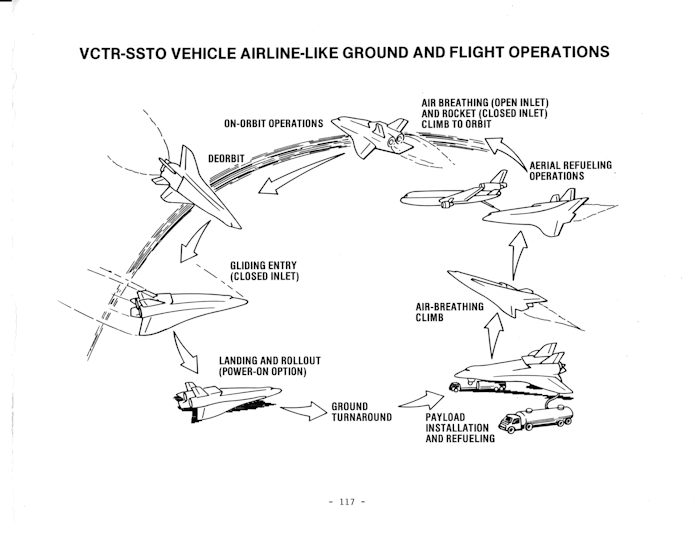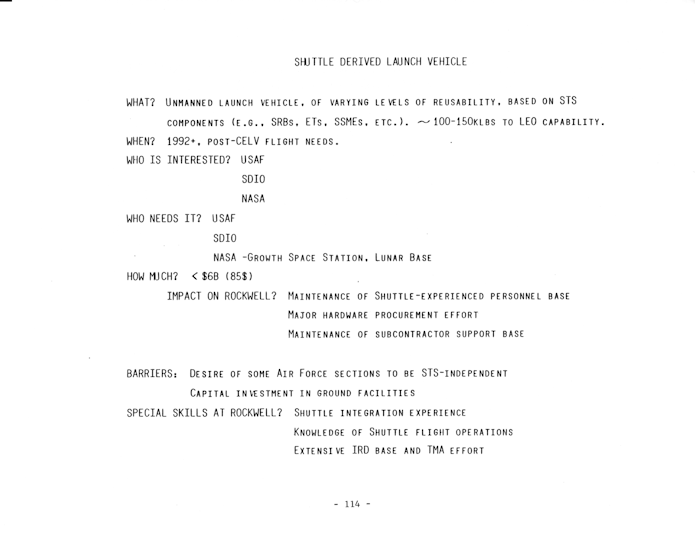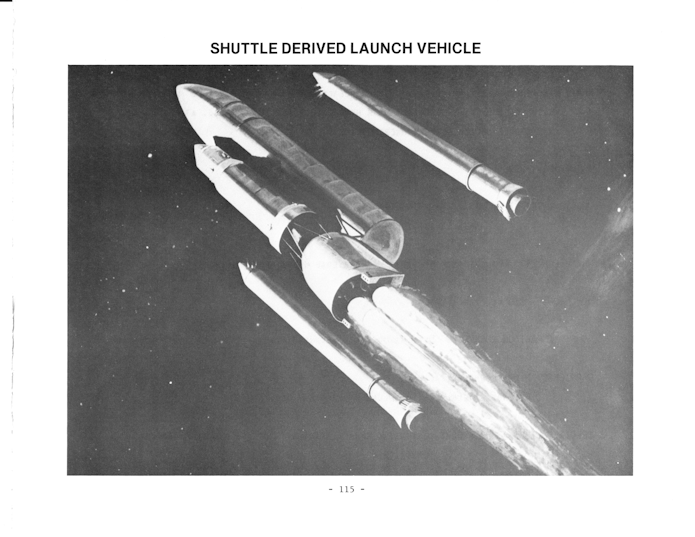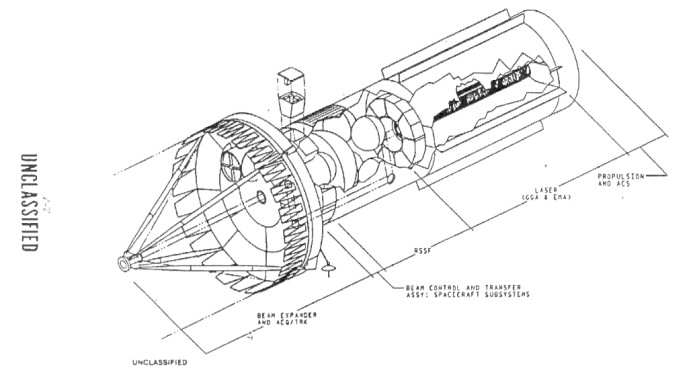In 1985 Rockwell International thought that there might be a business case for space based nuclear power systems. The customer base for nuclear reactors in space seemed to be restricted to military satellites (warning and recon mostly) and deep-space exploration systems. Advantages over solar power include resistance to the degradation of PV arrays due to passing through the ionizing Van Allen radiation belts and no need to track the sun. Costs, however, were high… high enough that in the end nothing came of it.
By 1985, the “Solar Power Satellite” program of the late 1970s was effectively dead. SPS rose to prominence atop the rising oil prices due to OPEC oil embargoes and the like, but in the early 80’s the global price of oil collapsed and potentially competitive systems such as SPS suddenly were no longer remotely competitive. Still, Rockwell International hoped that they could leverage their considerable experience with SPS to generate a [profitable business. But it was not to be.
This video was posted on YouTube some six-ish years ago, but remains worthy of viewing and discussion. It’s a General Dynamics film to NASA from late 1962/early 1963 discussing the study of Early Manned Interplanetary Missions (EMPIRE), NAS8-5026. It describes the future as it should have been… and as how Krafft Ehricke, the presenter of the film and one of the driving forces behind the program, saw it:
1: Manned landing on the moon by the end of the 60’s.
2: Initial manned flights to (flybys and orbits) Venus and Mars in the early 70s
3: Entire solar system explored robotically by the end of the 1980’s
4: Manned mission to Pluto by 1995
Ehricke’s view of the future of space flight from the standpoint of the mid-1960’s was previously shown HERE.
The original film included a number of bits of concept art of both manned and unmanned spacecraft. Sadly no Orion vehicles are on display (it is name-dropped), but the Mars lander/excursion module was of the kind originally proposed for Orion. This was pre-Mariner when the Martian atmosphere was *massively* over-estimated; these landers and their dinky parachutes would, with the real Martian atmosphere, have made impressive craters in the surface.
If you like the aircraft that applied atomic boot to Imperial Japanese ass – and who doesn’t – then the Smithsonian institution can hook you up. Not only do they have the famed Enola Gay on display, they also have a bunch of photos from 1945 up to more recent restorations available on their website in the form of a couple PDF collections. If you are building a B-29 model or are jsut interested in the B-29 in general or the Enola Gay in particular, this is a heck of a trove.
The first one is 419 pages (313 megabytes), with a lot of photos from what looks like the fifties to the nineties as the Enola Gay was trucked around and variously restored:
https://airandspace.si.edu/webimages/collections/full/A19500100000DOC20.pdf
The second is 318 pages (77 meg) and seems to be detail photos (mostly of pretty much individual components) from a restoration:
https://airandspace.si.edu/webimages/collections/full/A19500100000DOC06.pdf
A number of the photos can be viewed – thought not readily downloaded – here:
Support the APR Patreon to help bring more of this sort of thing to light! Alternatively, you can support through the APR Monthly Historical Documents Program.
The North American Rockwell proposal for the Space Shuttle Orbiter. It is clearly *close* to what actually got built, but there are important differences. The airlock is in the nose and the OMS pods are lower on the sides of the rear fuselage and the rear portion of the cargo bay could be fitted with a pod that includes flip-out turbofan engines for range extension and landing assistance.
The full-rez scan of this diagram has been made available to all $4 and up APR Patreons and Monthly Historical Document Program subscribers. It has been uploaded to the 2020-02 APR Extras folder on Dropbox for Patreons and subscribers. If interested in this piece or if you are interested in helping to fund the preservation of this sort of thing, please consider becoming a patron, either through the APR Patreon or the Monthly Historical Document Program.
In 1985, Rockwell International thought there might be a business case for commercialized space solar power systems. This could be akin to a miniaturized version of the Solar Power Satellite… while it looks like the normal approach would be a more or less conventional solar power systems simply attached to a customer payload, the possibility existed of remote systems that beamed energy to customers with microwaves.
In 1985, Rockwell ponders the business case for solar sails. Solar Sails, or “light sails,” had been around for a couple decades at that point, though purely as hypothetical constructs. Solar sails would really only be useful for interplanetary transits, which would of course limit the number of potential customers.
In 1985, Rockwell International considered the business case of an advanced single stage to orbit vehicle. The design illustrated was a manned, winged horizontal launched, horizontal landing design with, oddly, air inlets on the upper surface. Unlike the “Orient Express” or NASP designs of the time, this design was not meant to lift off and accelerate to Ludicrous Speed using scramjets, but was to lift off and rather sedately rendezvous with a tanker aircraft. This… is a bit familiar.
In the late 1990’s I worked for Pioneer Rocketplane. Our plan was to design and build a spaceplane that would lift off from a runway under turbojet power, with fuel tanks full of RP-1 and oxidizer tanks full of very little. The vehicle would rendezvous with a tanker aircraft which would transfer not jet fuel, but liquid oxygen. This is because for best performance an RP-1/LOX rocket system needs a far greater mass of LOX than RP-1. So leaving the LOX tank basically empty (a small amount was carried to keep the tank pressurized and chilled) would allow the vehicle to lift off at lowest practical mass. This lowered the mass needed for the landing gear, and lowered the surface area needed for the wings, which of course lowered the mass of the wings. The rocketplane would tank up, separate from the tanker and fire its rocket engine. In the case of the Pioneer Rocketplane “Pathfinder,” the spaceplane would reach orbital altitude, but not orbital velocity. An upper stage would boot the payload into orbit; the spaceplane would return home, either gliding or under jet power. The Rockwell design illustrated below *seems* to have been meant to operate in a similar fashion, but with the spaceplane intended to put itself directly into orbit. Most likely it would have been LH2/LOX powered, probably with SSME derivative engines.
The description in the text, though, describes very different vehicles, using propulsion system best described as highly steeped in the hypothetical. Atomic hydrogen and metastable helium are great stuff if you can get them… and, basically, you can’t. Not with 1980’s tech, not with 2020 tech. Someday, maybe.
In 1985, Rockwell International contemplated the business case for Shuttle Derived Launch Vehicles. The specific design illustrated used the ET and SRB’s more or less stock, but the orbiter was replaced with a recoverable propulsion and avionics module. The payload came in the form of an upper stage with something very like the Apollo Command and Service Modules. This would probably have been for a lunar mission of some kind as a Shuttle-class booster is too big for a simple capsule mission to LEO. The basic design would have roughly performed like the presumably forthcoming SLS.
